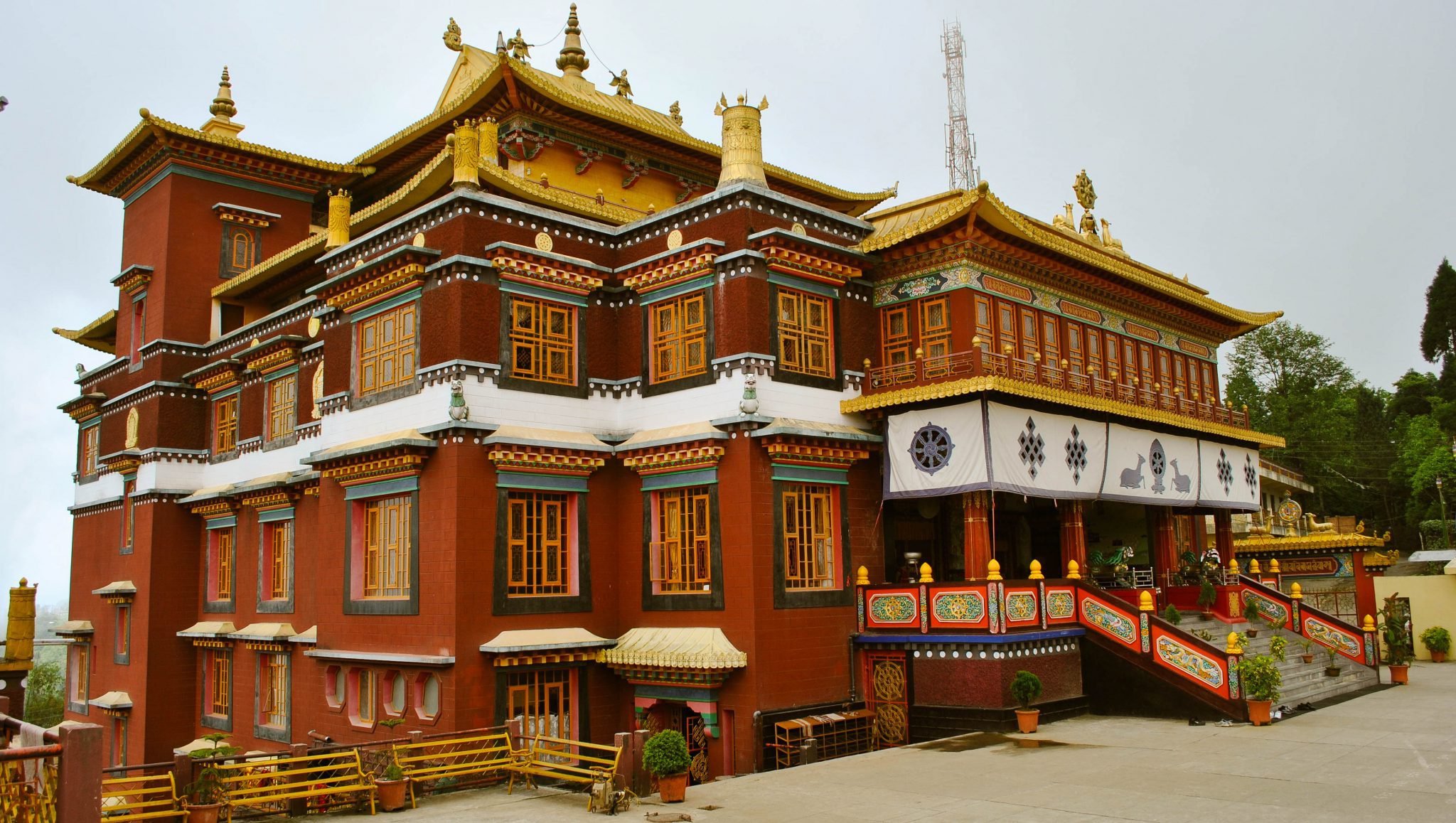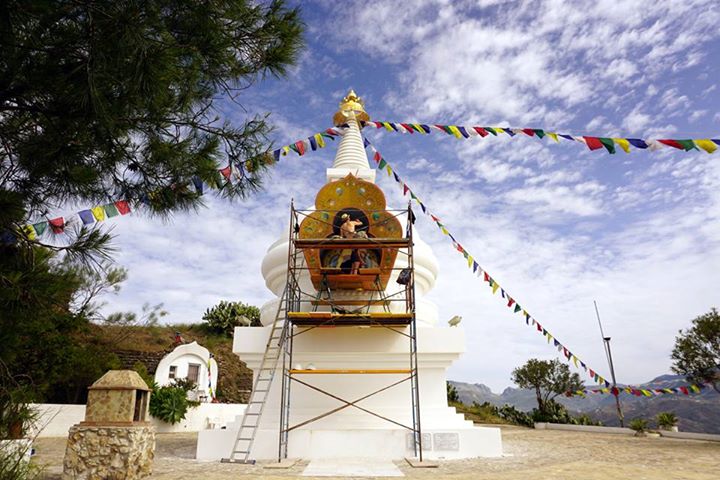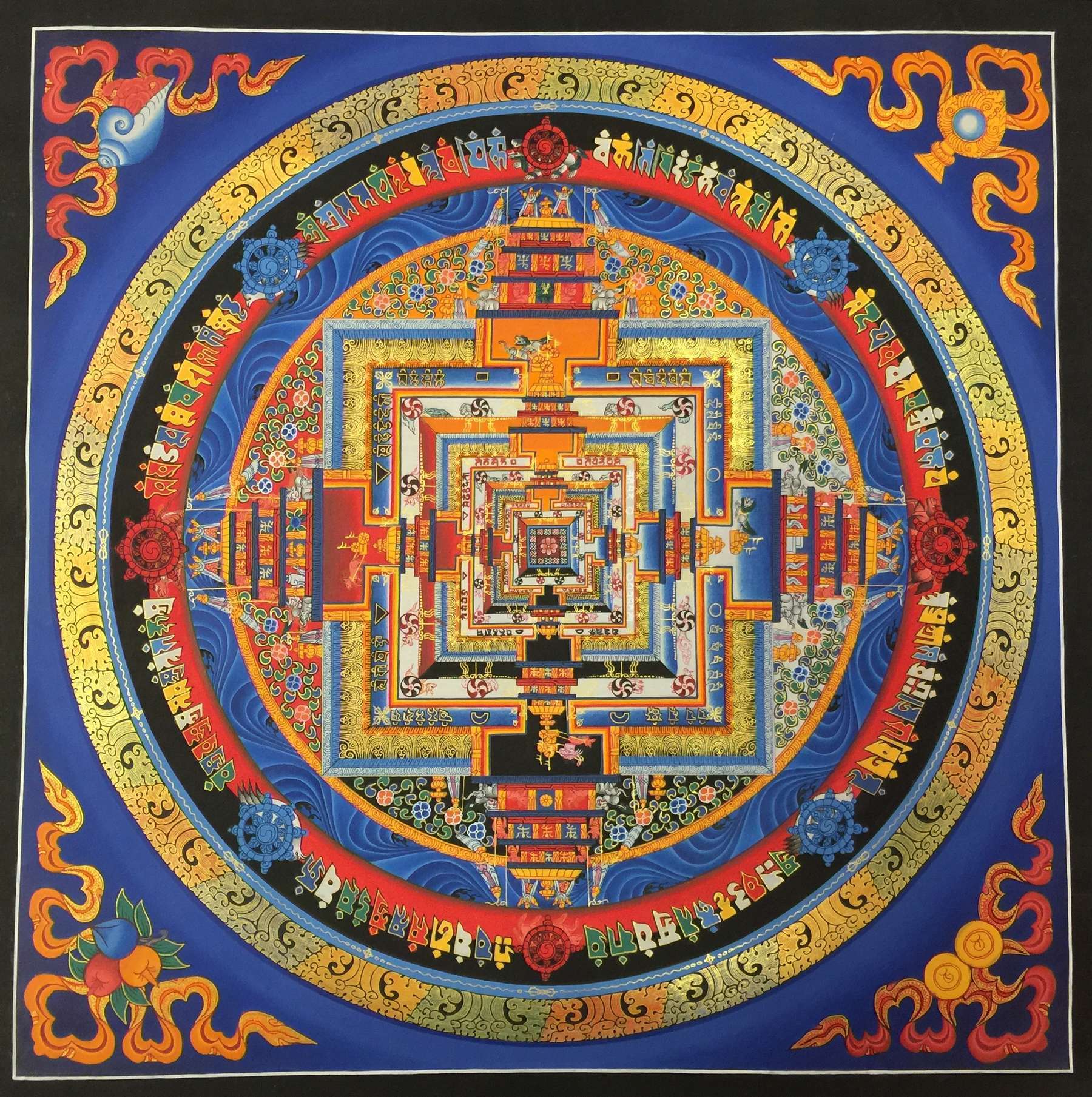Kalachakra – Mandala and Stupas around the world
Kalacakra in a Yi-dam(god protector) who turns the wheel of life. Kalacakra is the title of a work in one of the divisions of the Kangyur.
It is possible that Kalacakra is a personification of that work. Kalacakra is usually as a Yidam with four head on each of which is the third eye.
He may have twelve or twenty-four arms but never has more than two legs. In his Yi-dam form, he is dark blue. His body is covered by a tiger skin. He wears a belt formed of Vajras.
He has always represented stepping to the left on two prostrate personages under the right footholds and a bow and arrow the one under the left a trident and Khatvanga.
Kalachakra is a combination of two Sanskrit words Kala (meaning: time) and Chakra (meaning: wheel).
Table of Contents
Kalacakra Mandala and it’s Sacred Symbolism
Kalacakra represents the omniscience. In the painting, there are concentric circles signifying different meanings. In the center, there is a lotus flower that represents the universe blossom like a lotus. The structures on four sides are the Palace in Tibet. The mantras making a circle are OM MANI PADME HUM.
The Kalachakra mandala is definitely one of the most eye-catching thangka paintings and appreciated for the symbolic elements that compose it and the visual representation of important teachings of traditional Tibetan Buddhism.
However, as explained by His Holiness the Dalai Lama, many mistaken interpretations have circulated among people who viewed the Kalachakra mandala simply as a work of art.
The Kalacakra tantra is considered the most advanced practice of the Vajrayana tradition. This complex system of teachings was originated in India and incorporated into Tibetan Buddhist tradition.

Tibetan Kalachakra Mandala
How to Display Kalachakra Mandala?
First of all, it is important to know how to display the Kalachakra mandala correctly.
Notice the four different colors red, yellow/orange, white, and black of the main inner elements.
The mandala must be oriented with the black side facing down.
The Three Main Rings of Kalachakra Mandala
The outer ring is called a wisdom circle or protective ring. It is decorated with golden flames and the combination of these colors creates a rainbow that symbolizes the five aspects of the primordial wisdom and the five Dhyani Buddhas.
After the space ring, there are four inner rings representing the four main elements: air, fire, water, and earth.
The central part of the mandala had 3 distinct inner layers called the body, speech, and mind mandalas.
The geometric structure is the projection of a majestic palace with four gates and five floors.
There also exist three different Kalachakra, or “bodies” which Buddhist regard as vital to the understanding of life, linking our “being” to the Universe.
This very concept that has prompted the Kalachakra Mandala to its current notoriety., offering a simple yet effective way to practice dharma and more importantly compassion.
External Kalachakra This can be considered as the basic sciences: Astrology, Astronomy, and Mathematics
Internal Kalachakra The structure of the human body and it’s Energy System which is known as Chakras.
Other Kalachakra The Study and practice of the Kalachakra which leads us from our ordinary state to the state of Buddha-hood or Enlightenment.
Kalachakra Shakti

Newari Style Kalachakra Shakti Thangka Painting
The Kalachakra Mandala is also represented with one of the most important and well-known symbol of the Tibetan Tantric tradition: the Sanskrit seed syllables of the Kalachakra system known as “the mighty ten stacked syllables”.
Each syllable that composes the mantra has a different color and they are represented all interconnected on top of a lotus flower and surrounded by a ring of fire.
Kalacakra Stupas
The exact meaning of Kalacakra stupa refers symbolism of stupa as well as Buddhist understanding about the universe as mentioned in Kalachakra’s teachings.
Stupas are the structure that expresses the nature of the mind in a perfect way. It embodies both enlightened states of Buddha with body, mind, and speech, the ten Bodhisattva levels, as well as the universe.
Dhanyakataka Stupa, Guntur district, India
The oldest of all Kalacakra Stupas is Dhanyakataka Stupa. The stupa is not in a complete form, however, there is a museum with a few replicas of the original Dhanyakataka Stupa.
Bokar Monastery, Mirik, India

Bokar Monastery, Mirik, India
Stupa in Karma Guen, Spain

This stupa is situated in the South of Spain and was built under the guidance of Lopon Tsechu Rinpoche. It was the first stupa assisted by Tsechu Tsechu Rinpoche. He had mentioned this stupa to be the “Mother Stupa”, for the stupas in the west. It is located in Diamond Way Buddhist (Karma Kagyu ) center.
Stupa in Dharamsala, India
This structure is inside the residence of the Dalai Lama in Dharamsala, India.
Stupa in Garanas, Austria
The stupa was built on the ground of the Kalachakra Kalapa Centre in southwest Styria, Austria. It is the same copy of the stupa located at the residence of the Dalai Lama in Dharamsala, India.
Stupa at Kurukulla Center, Boston
The construction of Kurukulla Center started in September 1989, when the late Geshe Losang Jampa, who was the resident teacher at Milarepa Center, suggested to Lama Zopa Rinpoche that he might be able to reach more people if he lived in Boston rather than Vermont. Rinpoche agreed, and thus, Kurukulla Center came into being.

















